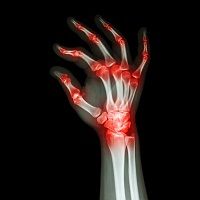Article
Gout Drug Fails to Show Benefits
Author(s):
A gout medication did not show significant statistical benefit in lowering flares associated with the condition.

A gout medication did not show significant statistical benefit in reducing flares associated with the condition.
AstraZeneca’s phase III clinical trial was unable to demonstrate that the gout-intended drug lesinurad, a selective uric acid reabsorption inhibitor (SURI), is an effective treatment for the condition. The yearlong study CRYSTAL (Combination Treatment Study in Subjects with Tophaceous Gout with Lesinurad and Febuxostat) examined the outcomes of combining febuxstat with different doses of lesinurad. The drug aimed to lower serum uric acid (sUA) levels — noting excess amounts in the bloodstream called hyperuricemia.
“It’s important to note that CRYSTAL studied patients with gout and visible tophi, also known tophaceous gout, which is particularly challenging to treat,” principal investigator Nicola Dalbeth, MBChB, MD, FRACP, said in a news release.
Each of the 324 patients had gout and above-target sUA levels as well as at least one tophus in the hands or wrists and/or feet or ankles between 5 and 20 mm. For 3 weeks prior to the start of the study, the participants orally took 80 mg of febuxostat. They were then split into groups and in addition to the febuxostat were randomly assigned to either take 200 mg of lesinurad, 400 mg of lesinurad, or a placebo once a day.
As recommended by the American College of Radiology (ACR) and European League Against Rheumatology (EULAR), sUA lowering agents must achieve levels of at least <6.0mg/dL in gout patients and <5.0mg/dL in gout patients with increased severity and urate burden.
By the 6-month mark, the amount of patients with lowered sUA levels for tophaceous gout was greater in those taking febuxostat and 200 mg of lesinurad (56.6%) when compared to just febuxostat alone (46.8%). The same was witnessed in those with a baseline sUA of 5.0mg/dL or greater (44.1%) versus the placebo group (23.5%). More patients taking febuxostat and 400 mg of lesinurad (76.1%) reached the target sUA in comparison with the febuxostat only group (46.8%). By month 12, the drug in combination with febuxostat failed to show a full resolution of at least one tophus in a significant proportion of the patients.
It was noted that the most common adverse events associated with both lesinurad 200mg and 400mg treatments in combination with febuxostat were nasopharyngitis, hypertension, and headache — when compared to the febuxostat only group.
“While no oral agent has demonstrated a beneficial effect on flares in 12-month randomized controlled clinical trials, this analysis showed that over time — as lower sUA levels were maintained – flares decrease and tophus area reduced,” Johan Hoegstedt, global medicines leader for Lesinurad.
The team continues to track the drug’s effects as time goes on.





